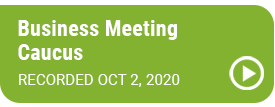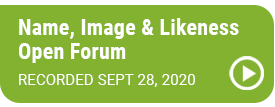Frequently Asked Questions
Proposed Amendments to the NAIA Bylaws
20-B-01
Bylaws Amendment #1 – Softball Frequency of Play Limit
Current Rule: Softball teams can compete on a maximum of 28 dates.
Proposed Change: To change the frequency of play limit in the sport of softball from 28 dates to 56 games, and adjust medical hardship limits accordingly.
Effective Date: August 1, 2021
Submitted By: Softball Coaches Association
Co-sponsored By: Wolverine-Hoosier Athletic Conference
The National Administrative Council (NAC) determines the minimum amount of games a team must play to be eligible for the national championship. Softball is currently set at 16 dates, which would translate to 32 games. The NAC will update its policy and determine an appropriate new minimum if this proposal is passed.
If the game has commenced, softball sport rules dictate that a game is not considered a complete game until five innings have been completed. If the five innings are completed before bad weather occurs, it will be considered a complete game and count as a game towards the team’s available 56 games. If less than five innings have been completed, it is not considered a game, it does not count towards statistics or win/loss records and does not count against the team’s scheduling limits. A make-up game could be scheduled, and that game would then count against team limits.
20-B-02
Bylaws Amendment #2 – Volleyball Frequency of Play Limits: Scrimmages
Current Rule: Volleyball scrimmage dates are limited to two additional dates as written in Article I, Section G, Item 2. These two additional dates can be used at any point in the 24-week season.
Proposed Change: Add an additional three scrimmage dates to be played only after the end of the fall term during weekends or non-scheduled class dates.
Effective Date: August 1, 2021
Submitted By: Women’s Volleyball Coaches Association
Co-sponsored By: Wolverine-Hoosier Athletic Conference
20-B-03
Bylaws Amendment #3 – Wrestling: Frequency of Play Exception
Current Rule: A wrestling student-athlete who works with a coach to practice for or compete in any event will be treated as engaging in practice which must count towards the 24-week season, and possibly treated as an event that must count towards the student’s and the team’s frequency of play limit.
Proposed Change: To create an exception to the frequency of play limits and 24-week season for wrestling student-athletes who qualify and compete in US Senior Nationals, national or Olympic team trials/competition or to represent USA wrestling in competition (or international equivalents). Permits student, coach(es) and one teammate to practice in advance of competition without counting towards 24-week season.
Effective Date: October 6, 2020
Submitted By: Women’s Wrestling Coaches Association
Co-sponsored By: Mid-South Conference
The non-qualified student-athlete must be on the same NAIA team as the student-athlete who is training for the national/Olympic event.
20-B-04
Bylaws Amendment #4 – Seasons of Competition: Minimum Participation
Current Rule: A student-athlete is charged a season of competition for competing in a single competition (scrimmages are excluded).
Proposed Change: To institute a minimum number of intercollegiate contests a student must participate in before the student will be charged a season of competition, equivalent to greater than 20% of the frequency of play limit for that sport, rendering the medical hardship provision moot except for instances where a student was not an NAIA student-athlete during the season in question. In addition, replace the unattached exception with an exception permitting national or Olympic team competition without charging the student a season of competition.
Effective Date: May 1, 2021 as applied to eligibility decisions for competition in August 2021 or beyond
Submitted By: Competitive Experience Committee
Note that scrimmages are excluded from this bylaw both currently and under the proposal, meaning that a student’s participation in a scrimmage does not apply to determinations about seasons of competition. Therefore, the 20% limit reflects the games, competitions, dates, tournaments and meets in which a student could be charged a season of competition.
Assuming that School A does not provide the student with a release, the student would not be able to participate at School B due to the residency requirement. The result would be the student would only play at School A during that academic year but would not be charged a season of competition.
If School A chose to provide a release and waive the residency requirement, the student could compete immediately at School B. The proposal is specific to the number of games to be played at a particular institution, meaning the games the student played at School A will not be combined with the games at School B. The student would not be charged a season of competition until he played in 7 games at School B.
The Competitive Experience Committee’s rationale for eliminating the unattached exception included the following:
- Efforts to decrease the use of the exception often created other implications that were challenging to apply. For example, requiring students to be eligible to use the exception reduced the use of the exception as a loophole for ineligible students but required that students had their eligibility properly certified, including over the summer or during breaks in enrollment.
- The unattached criteria had become more complicated over time, and often led schools to inadvertently apply it incorrectly. This meant schools unexpectedly found themselves in violation by playing an ineligible player, and that students unexpectedly were charged seasons of competition.
- The proposal’s 20% approach provides all students with a cushion to participate in some amount of competition before being charged. This 20% cushion provides a blanket approach for all students to utilize, including events that previously would have had to meet the unattached criteria in very specific ways. For example, a wrestler could participate in up to four competitions that his coach entered him into, while wearing his school singlet, or having his coach present and providing feedback, all without being charged a season of competition.
- The proposal’s addition of an exception for national or Olympic team play is intended to ensure students can continue to take advantage of such opportunities.
- The combination of the 20% approach paired with the national/Olympic team exception is intended to essentially replace the unattached exception in a way that is more manageable, more consistent and more in line with the original intent.
20-B-05
Bylaws Amendment #5 – Progress Rule Exception for Non-intercollegiate Competition
Current Rule: Progress Rule applies equally to any student with prior seasons of competition.
Proposed Change: To create a one-time, one-year exception to the Progress Rule for incoming freshmen students who have been charged at least one season of competition for non-intercollegiate participation. At the conclusion of the one year, the student will be required to satisfy the Progress Rule and the corresponding number of hours required for the total number of seasons of competition the student has been charged.
Effective Date: May 1, 2021 as applied to eligibility decisions for competition in August 2021 or beyond
Submitted By: Competitive Experience Committee
20-B-06
Bylaws Amendment #6 – Senior & Graduate Student Exceptions: Enrollment Verification
Current Rule: Verification of enrollment must be submitted by the registrar to the eligibility chair in writing.
Proposed Change: To permit a registrar to verify a senior or graduate student’s enrollment in less than 12 hours by signing the Official Eligibility Certificate within the Eligibility Certification Process (ECP) software without requiring additional documentation from the registrar.
Effective Date: October 6, 2020
Submitted By: Wolverine-Hoosier Athletic Conference
Co-sponsored By: National Eligibility Committee
20-B-07
Bylaws Amendment #7 – Repeat Courses
Current Rule: Allow repeat courses to count towards the 24/36-Hour Rule and the 12-Hour Enrollment rule when the student has previously taken the course and earned a “C” or “D” but the student’s major requires at least a grade of “B.”
Proposed Change: To permit the initial attempt of a course to be utilized to satisfy the 12-Hour Enrollment Rule and the 24/36-Hour Rule when the course is required to be earned with a higher grade to satisfy degree completion or general education requirement in the student’s declared major field of study.
Effective Date: May 1, 2021 as applied to eligibility decisions for competition in August 2021 or beyond
Submitted By: Registrars Association
Co-sponsored By: Faculty Athletics Representatives Association
20-B-08
Bylaws Amendment #8 – Recertification: 21-Day Window
Current Rule: A student who is eligible the last day of a term may retain eligibility until midnight of the 21st calendar day following the close of a term to allow an institution time to recertify eligibility.
Proposed Change: To extend the window for recertification from 21 days to 30 days following the close of a term or 10 days from the end of the interterm, during which time any student who was eligible during the term can maintain eligibility and continue to compete.
Effective Date: October 6, 2020
Submitted By: Wolverine-Hoosier Athletic Conference
Co-sponsored By: River States Conference
20-B-09
Bylaws Amendment #09 – Amateur Code – Name, Image, Likeness Compensation
Current Rule: Prospective or current student-athletes are not permitted to receive compensation for use of their name, image or likeness in promoting a commercial product or enterprise or in making a public appearance if that promotion references their status as a student-athlete or any institution they have attended.
Proposed Change: To allow prospective and current student-athletes to receive compensation for use of their name, image or likeness in promoting a commercial product or enterprise or in making a public appearance even if that promotion references their status as a student-athlete or any institution they have attended.
Effective Date: October 6, 2020
Submitted By: Association of Student-Athletes
Co-sponsored By: National Coordinating Committee





